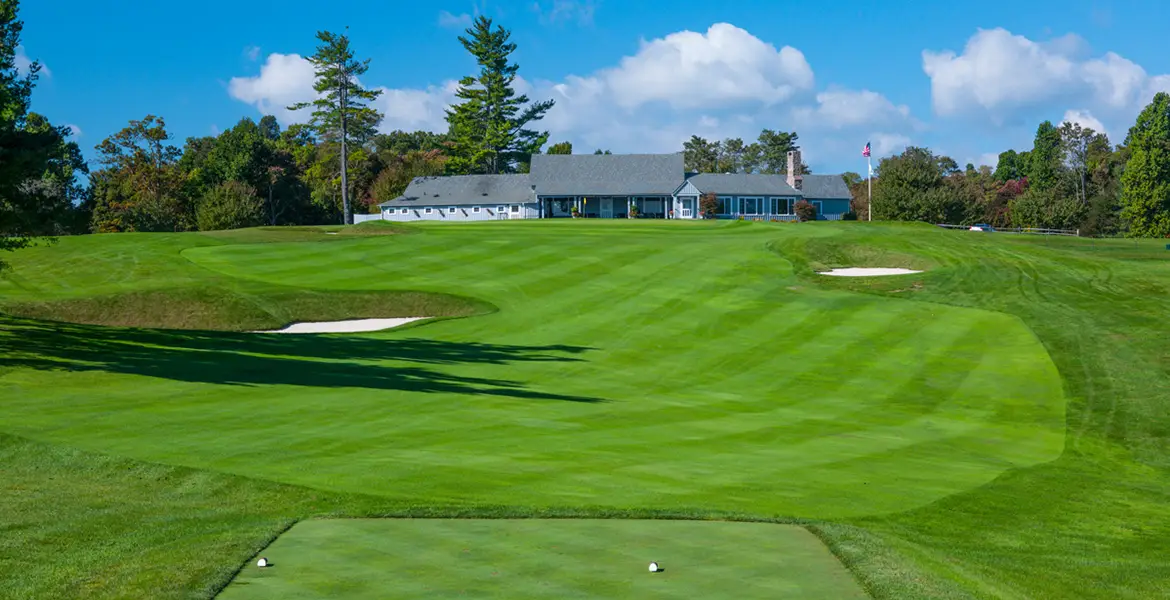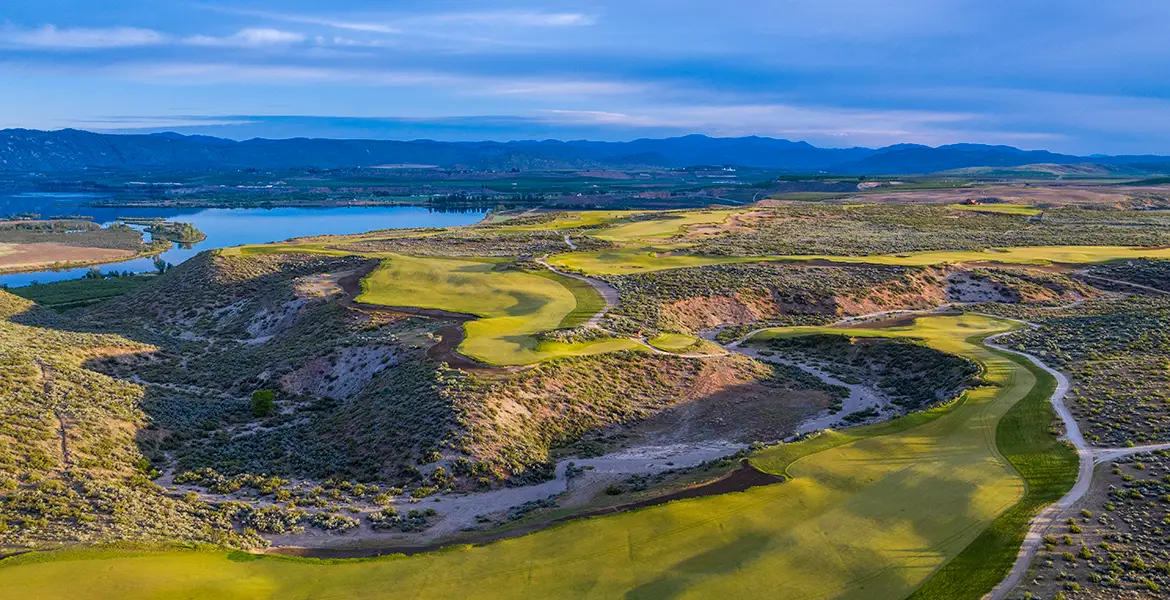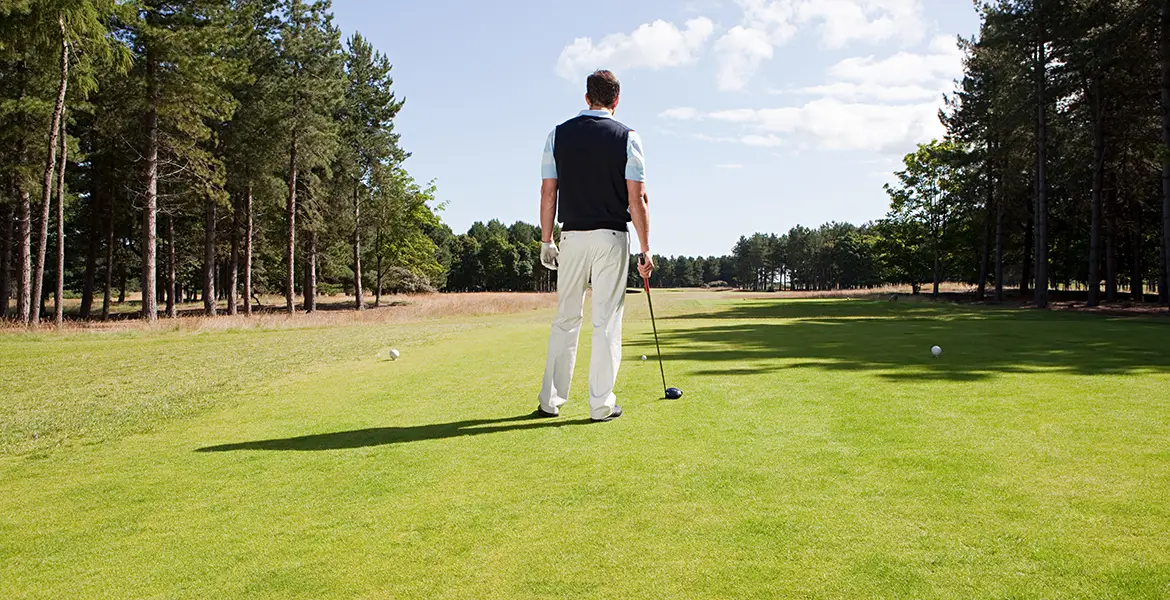The lowly teeing ground is only lowly if you overlook its strategic—and pleasure-producing—impact
In hindsight, our discussion of a golf course’s features should logically have started with tees, since they are the starting point for each hole. However, tees are not the first feature that comes to mind when thinking about a golf course. In all honesty, they are my least favorite feature to shape (flat), and once you have put your peg in the ground, your view goes elsewhere. While they are integral to the play of a hole, and their architectural importance nearly rivals those of the other features we have explored (greens and bunkers), they are sadly overlooked or underappreciated in the golf landscape.
When the game began, teeing grounds were to be no further than two club-lengths from the previous hole, with sand from that hole used to build a small hill upon which the ball was placed for the next shot. While this edict is long gone, it does set an interesting precedent for placing tees in close proximity to the last green. As I have stated my love for the walking game, it is always a key element to the routing of our courses to get the tees as close as possible to the green. Dr. Alister MacKenzie clearly felt that this was an important part of design: In his “Thirteen Essential Features” of an ideal golf course, he wrote, “There should be little walking between the greens and the tees, and the course should be arranged so that, in the first instance, there is always a slight walk forwards from the green to the next tee; then the holes are sufficiently elastic to be lengthened in the future if necessary.”
The tee is the only place on a golf hole where we golf architects can place you with certainty. Once you have teed off, you could be anywhere. So from this spot we had better paint the picture that we want you to see—or not see, in the case of a blind shot—or we will not get a second chance. From this perch the strategy should be discernible and the thought process needed to decipher the character of the hole somewhat evident. However, it is our belief that the oft-cited refrain of the professional golfer, “the hole is right in front of you,” is not something we get excited about. We want our holes to be infused with enough mystery, subtlety, and intrigue that what you are seeing is what we intended: Then you may come to learn that the view is not as straightforward as at first glance. The mental gamesmanship that infuses quality golf course architecture starts on the tee.
We spend a lot of time talking about angles of play and the proper strategies associated with these angles. We have a preference for providing varied angles of play from the tees, creating almost a cape-like formation as we stagger them either to the left or the right depending on the line of play or the lay of the land. The cape formation is based on the principle of “bite off as much as you can chew.” From the back tees, you should need to bite off a lot; if the tees are offset and placed further forward, then the chewing gets easier with each tee location. That is not to say forward sets of tees should never be challenged with a hazard of some kind. We believe even the most novice of golfers should encounter the highs and lows of what makes golf so interesting and infuriating. Taking on a challenge and triumphing is at the heart of why we play golf.

We used tee arrangement to great effect at The Olympic Course in Rio de Janeiro, where the challenges presented to the best players in the world in 2016 were far more daunting than the challenges faced by the recreational golfers who play there today.
The final control tees have is on the length of the course. As we have discussed, variety is the key ingredient in great golf course architecture. The varied length of the course should come from each and every tee and should provide equity in the varied challenges on the course. However, it is a common misperception that simply creating a shorter course levels the playing field. If this were true, then all we would need to do is figure out the average driving distance and get everyone to the same place with their tee shot. If we all land 150 yards from the green, the best players are going to have a wedge into the green, most of us a 7- or 8-iron, and some of us a hybrid. How is that equitable? It is much more important to set up the length of each hole, and position of every tee, so that the second shot, not the landing area, is similar for all golfers.
This brings us to the concept of Play it Forward, which I wholeheartedly support. There should be tee-placement opportunities on each course that allow all of us to find encouragement and success: For most of us those opportunities exist far forward of where we normally play.
So the next time you tee it up, take a look around. Take in the picture that the architect has painted, look at the angles, the challenges that confront you from each set of tees. These little patches of grass may not be the most striking part of any course, but they provide the launching pad for each and every hole and that is a mighty important job.






